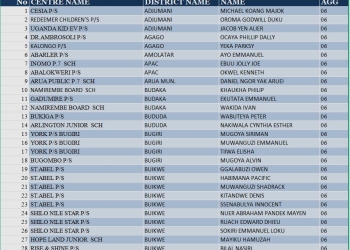
BWINDI— A joint census to count the endangered mountain gorilla population and, for the first time, chimpanzees has commenced in the interconnected Bwindi Impenetrable National Park in Uganda and the Sarambwe Nature Reserve in the Democratic Republic of Congo (DRC), conservation officials announced Monday.
The survey, spearheaded by the World Wide Fund for Nature (WWF) in collaboration with the Uganda Wildlife Authority (UWA) and international conservation programs, aims to provide a comprehensive assessment of both great ape species across this critical transboundary landscape.
Ivan Tumuhimbise, WWF-Uganda country director, highlighted the significance of the initiative, stating it marks the first-ever coordinated effort to determine the chimpanzee population within this ecosystem. The Bwindi-Sarambwe area is unique for harboring both endangered mountain gorillas and chimpanzees alongside human communities. The chimpanzee count is being led by the Jane Goodall Institute.
Six teams, comprising personnel from 11 participating institutions, have begun systematically traversing the rugged terrain, seeking evidence of mountain gorillas such as nests and collecting fecal samples for genetic analysis. In a shift from previous censuses, the genetic analysis will be conducted within the region, enhancing local expertise and reducing logistical challenges associated with international sample shipment.
“This collaborative census underscores the strong partnership in our efforts to safeguard these endangered great apes,” Tumuhimbise said. Data collection and analysis will continue throughout 2025, with results expected in 2026.
The census, typically conducted every five years for gorillas, expands its scope this year to include chimpanzees. The last gorilla census in the area took place before the COVID-19 pandemic in 2018. The landscape-level approach of this year’s count will help track ape movements across the Uganda-DRC border.
Beyond population numbers, the census will also evaluate the condition of the gorillas’ and chimpanzees’ habitat, noting any changes over the past five years and potential environmental pressures.
While past gorilla censuses have indicated population growth, officials emphasized the importance of the current count for accurate data. The information will be vital for informing conservation strategies and understanding factors influencing primate behavior, such as movement into human-dominated areas.
Tumuhimbise explained the inclusion of chimpanzees in the census as crucial for their conservation as an endangered species. Understanding their population size will aid in developing effective management plans and addressing threats. He also noted the potential for future chimpanzee tracking programs in the region, similar to those for gorillas.
Decades of conservation investment and collaboration have yielded positive results in the region, Tumuhimbise noted, citing increased community awareness and participation in protecting the great apes. While acknowledging concerns about political instability in the neighboring DRC and its potential impact on wildlife, he emphasized the ongoing commitment to collaborative conservation efforts.
Tumuhimbise said the findings of this census are expected to be a crucial benchmark for future conservation initiatives aimed at ensuring the long-term survival of mountain gorillas and chimpanzees in this shared ecosystem.

















